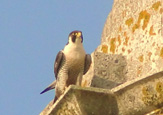





Big Cats in Britain - Page 1 of 4
I will start from the beginning as I feel the need to make myself absolutely clear to the many sceptical people out there. There are without doubt wild none native and once native cats, large and small living in Great Britain. There are also wild native cats that were once thought rare or even extinct living wild in Great Britain. There is a psychological barrier that prevents many people from believing the blatant truth.
Man has always kept animals, and wild animals especially, as domestic animals come from wild animals. But man has had a fascination for wild animals, and has used and abused them for thousands of years. Early man did it, and modem man still does it. The Roman Empire was probably the first people in this land to bring foreign animals in; animals of all kinds for all different reasons. Fighting was a Roman pass time, and the use of animals, especially large carnivores was commonplace in certain places. Animals such as lions, tigers and leopards, were just some of the carnivores used in amphitheatres. Some of these animals must have escaped, and a few never recaptured. I certainly am not suggesting that big cats stem from this pass time, but we can not rule out the idea that this is where a very small fraction of it may have stemmed from.
Throughout the middle ages, right up to the nineteen hundreds, people have kept the exotic, the strange, the legendary the beautiful and the dangerous. Travelling menageries had lost many animals, and in the days of old, did not have the know how, or basic way's to recapture lost animals. There must have been many an animal living wild, with or without a mate of the same species to breed with. In Victorian times, the keeping of wild animals was at its peak, and many a beast escaped and was documented as so. Some animals were never recaptured.
There are record of beasts such as lions or tigers or other carnivores living in the wild, not surprisingly start to gather momentum during the latter part of the nineteenth century. Many zoos and wildlife parks started later on, and during the twentieth century, reached a peak, but also the private individual started to collect certain types of wild animals. One such group was the larger carnivores such as canids and felids That is, dogs and cats, of the wild variety.
After the Second World War, American airbase service men often obtained pumas as mascots and brought them over to Britain. At the same time and during the next few decades, certain types of British public thought it trendy or macho to keep 'big cats' as pets. These 'big cats' were of certain types, especially leopards, pumas and less often jaguar or other species. Black (melanistic) leopards otherwise known as panthers were used as status symbols. Many were bred and some owners had many. A great many of these animals undoubtedly escaped, and we even had people admitting it. At least two big cat enthusiasts admitted to losing both leopard and puma, and also some people admit to purposefully releasing some.
This may have been even more likely when stringent laws came in to force, such as the dangerous wild animals act 1976, of which required keepers to not only house the animals in certain ways but also obtain a licence of which was no cheap feat. Some types of people would certainly have released animals rather than be a victim of the law. However, I do not think that this is the main reason as to why we have cats living wild today.
Click here to see my photographic evidence of Big Cats in Britain
Page 1 | Page 2 | Page 3 | Page 4

Roebuck, facial holdmarks